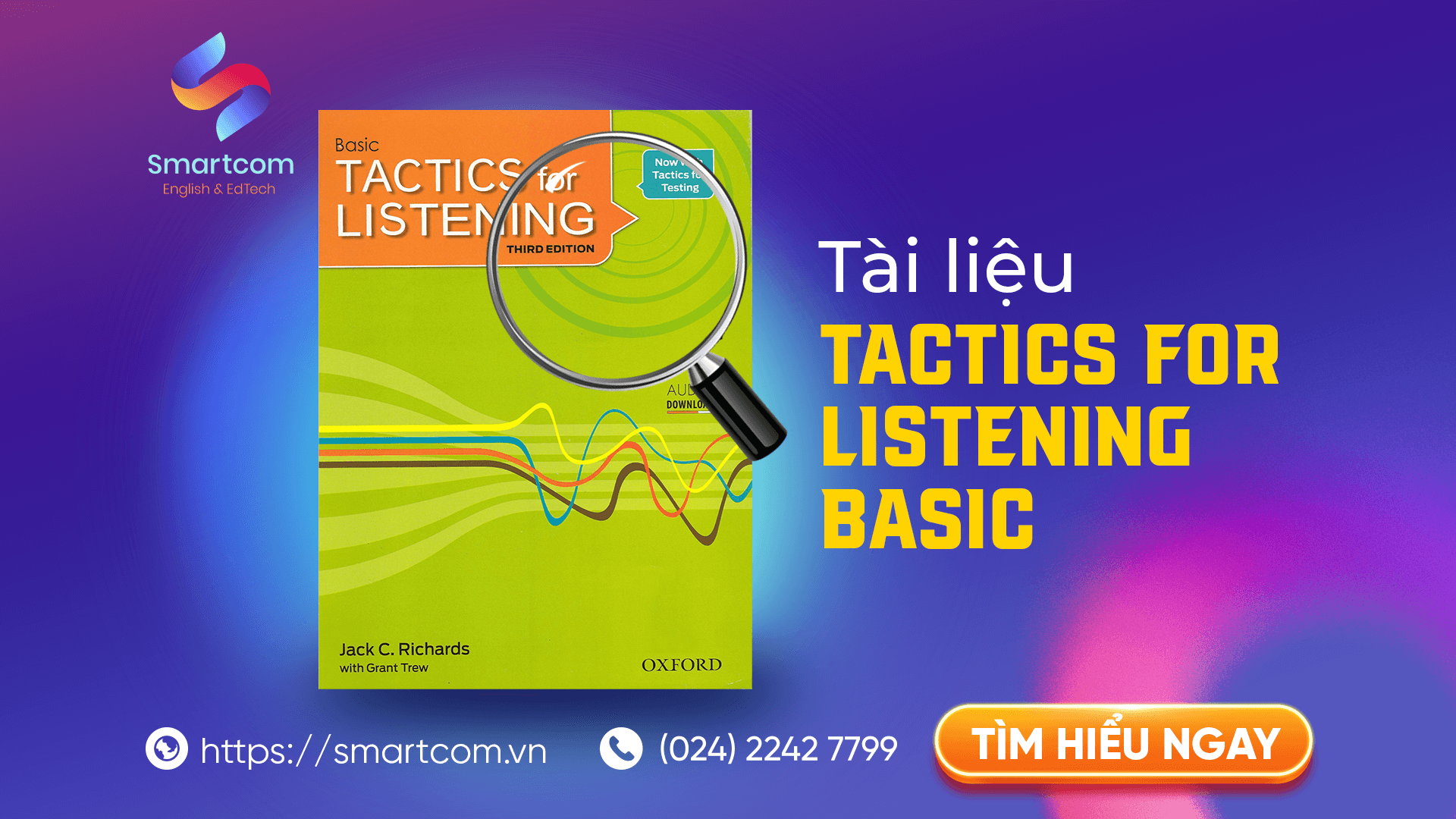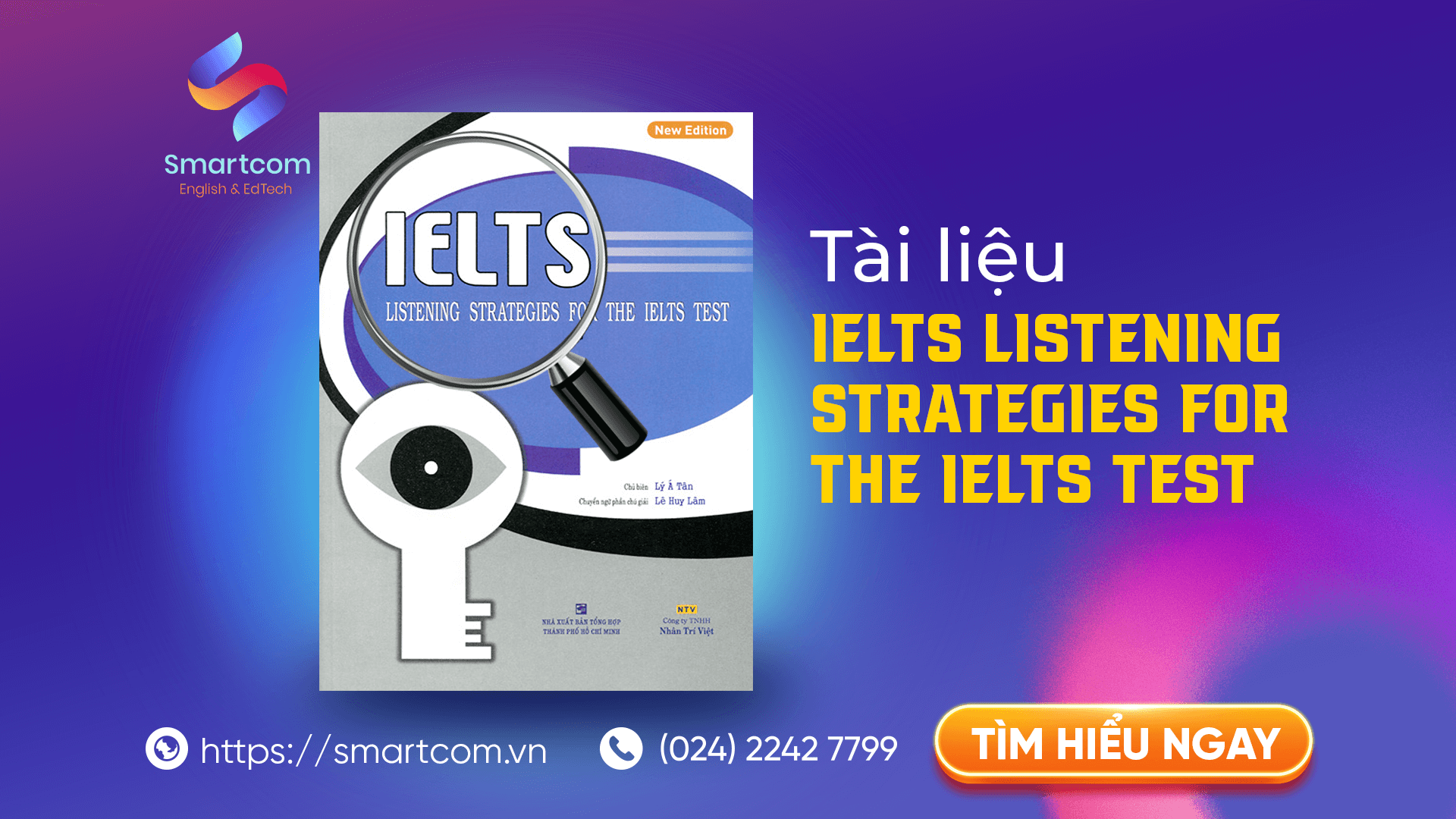Đội ngũ chuyên gia tại Smartcom English là tập hợp những chuyên gia đầu ngành trong lĩnh vực IELTS nói riêng và tiếng Anh nói chung. Với phương pháp giảng dạy sáng tạo, kết hợp với công nghệ AI, chúng tôi mang đến những trải nghiệm học tập độc đáo và hiệu quả. Mục tiêu lớn nhất của Smartcom Team là xây dựng một thế hệ trẻ tự tin, làm chủ ngôn ngữ và sẵn sàng vươn ra thế giới.
Tưởng tượng bạn đi thi gặp đề IELTS Speaking Clothes mà có thể nói chuyện trôi chảy, mượt mà với giám khảo, giành về số điểm Speaking cao ngất ngưởng? Một số điểm Speaking tuyệt đẹp chắc chắn sẽ kéo tổng điểm IELTS của bạn lên rất nhiều đấy! Nghe thật tuyệt vời, phải không?
Hẳn bạn cũng mong muốn viễn cảnh tươi đẹp ấy, với những khả năng như:
-Thuộc nằm lòng các từ vựng về Clothes (quần áo)
-Tự tin, sáng tạo, biết cách triển khai các ý tưởng hay ho để hoàn thành bài thi một cách hoàn hảo
-Một tâm lý vững vàng, tự tin bước vào phòng thi
Chỉ tiếc, hiện tại bạn:
-Không biết nhiều các từ vựng về các loại quần áo (clothes) cho lắm
-Không biết cách phát triển ý tưởng khiến câu trả lời trở nên nhạt nhẽo, không đủ ấn tượng
-Tự ti, sợ sai, nên không dám nói quá nhiều
Nhưng, đừng lo lắng quá!
Bài viết này của Smartcom English sẽ hướng dẫn bạn một số từ vựng thông dụng trong chủ đề Speaking Clothes, cùng các câu trả lời mẫu mà bạn hoàn toàn có thể tham khảo cho bài thi của mình! Sự luyện tập, chuẩn bị kỹ càng chính là chìa khóa của thành công! Hãy theo chân Smartcom khám phá bài thi IELTS Speaking Clothes này bạn nhé!
Từ vựng IELTS Speaking Clothes
- Clothes (n): quần áo
- Clothing (n): việc mặc quần áo (chọn mặc gì)
- Attire (n): quần áo/đồ trang điểm (cũng có nghĩa khác là sừng hươu)
- Outfit (n): 1 bộ trang phục
- Wandrobe (n): tủ quần áo
- Fabric (n): vải
- T-shirt (n): áo phông
- Shirt (n): áo sơ-mi
- Hoodie (n): áo dài tay có mũ
- Sweater (n): áo len dài tay
- Blouse (n): áo cánh (có tay, khoác ngoài)
- Blazer (n): áo nỉ ngắn (thường mặc ngoài áo vét)
- Wool blazer (n): áo lông cừu
- Jacket (n): áo khoác (thường dài đến hông)
- Coat (n): áo khoác (thường dài đến đầu gối, dày)
- Cardigan (n): áo (thường là khoác) bằng len
- Shorts (n): quần đùi
- Jeans (n): quần bò
- Trouser (n): quần dài
- Pant (n): quần (ở Mỹ, pant là quần mặc bên ngoài, ở Anh, pant mặc bên trong trouser)
- Dress (n): váy
- Skirt (n) váy ngắn
- Fashion (n): thời trang
- Trend (n): xu hướng
- Style (n): phong cách
- Fashion trend (n): xu hướng thời trang
- Fashion statement (n): nhận định (số đông) về thời trang
- Blouse /blaʊz/: Áo sơ mi nữ
- High heels /haɪ hiːlz/: Giày cao gót
- Leggings /ˈleɡɪŋz/: Quần legging
- Purse /pɜːrs/: Túi xách nhỏ
- Cardigan /ˈkɑːrdɪɡən/: Áo len mỏng
- Earrings /ˈɪrɪŋz/: Bông tai
- Necklace /ˈnekləs/: Dây chuyền
- Loafers /ˈloʊfərz/: Giày lười
- Vest /vest/: Áo ghi-lê
- Suit /suːt/: Bộ vest
Từ vựng diễn tả phong cách thời trang
- Casual /ˈkæʒuəl/: Thường ngày, thoải mái
- Formal /ˈfɔːrml/: Trang trọng
- Trendy /ˈtrendi/: Thời thượng
- Chic /ʃiːk/: Thanh lịch
- Vintage /ˈvɪntɪdʒ/: Cổ điển
- Bohemian /boʊˈhiːmiən/: Phong cách boho
- Minimalist /ˈmɪnɪməlɪst/: Tối giản
- Athleisure /æθˈliːʒər/: Thể thao thời trang
- Edgy /ˈedʒi/: Táo bạo
- Classic /ˈklæsɪk/: Kinh điển
Collocations về chủ đề Fashion & Clothing
- Dress up: Mặc đẹp, ăn diện
- Try on: Thử đồ
- Mix and match: Phối đồ
- Go out of fashion: Lỗi mốt
- Keep up with fashion: Theo kịp xu hướng thời trang
- Dress to impress: Mặc để gây ấn tượng
- Put on: Mặc vào
- Take off: Cởi ra
- Fit like a glove: Vừa vặn hoàn hảo
- Make a fashion statement: Tạo dấu ấn thời trang
Các Idiom chỉ chủ đề Fashion & Clothing
- Dressed to the nines: Ăn mặc lộng lẫy
- Wear the pants: Là người quyết định (thường trong gia đình)
- Fit like a glove: Vừa vặn hoàn hảo
- Off the rack: Đồ may sẵn
- Have a sense of style: Có gu thời trang
- Caught with your pants down: Bị bất ngờ trong tình huống xấu hổ
- Cut from the same cloth: Giống nhau về tính cách hoặc phong cách
- Fashion victim: Người chạy theo thời trang một cách mù quáng
- All dressed up and nowhere to go: Ăn diện nhưng không có nơi để đến
- Wear your heart on your sleeve: Thể hiện cảm xúc rõ ràng
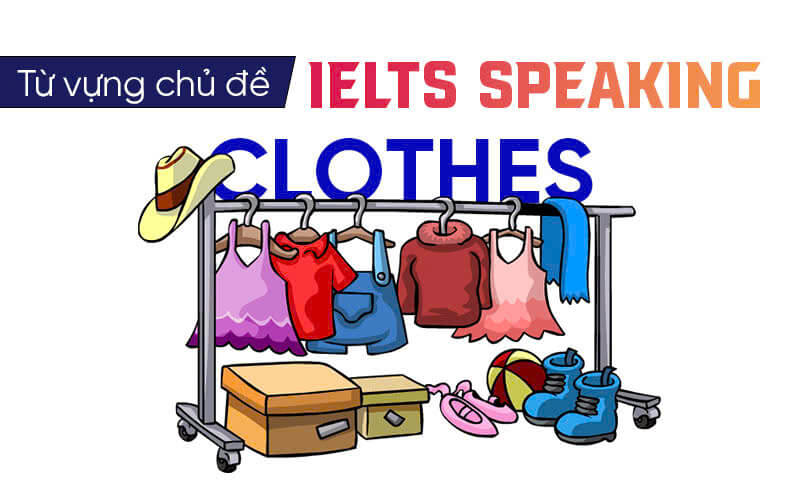
Bài mẫu IELTS Speaking Clothes – Part 1
- Question 1: What kind of clothes do you prefer to wear in your daily life?
In my daily life, I prefer wearing comfortable and casual attire. Typically, I opt for jeans and a simple T-shirt or a blouse. This combination allows me to feel relaxed while still looking presentable.
- Question 2: How important is fashion to you?
Fashion is somewhat important to me, but I prioritize comfort and personal style over trends. I appreciate a well-thought-out outfit, yet I believe that one’s clothing should reflect individual personality rather than strictly adhere to current fashion statements.
- Question 3: Do you enjoy shopping for clothes?
Yes, I do enjoy shopping for clothes, although I prefer to do so infrequently. I find it exciting to discover new pieces that complement my wardrobe. However, I often prioritize quality over quantity, seeking garments that are both stylish and durable.
- Question 4: Have your clothing preferences changed over the years?
Yes, my clothing preferences have evolved significantly over the years. In my younger days, I gravitated towards more vibrant and energetic styles. As I’ve matured, I find myself leaning towards more classic and versatile pieces that can easily transition between various occasions.
- Question 5: Do you want to become a model in the future?
To be honest, becoming a model has never really crossed my mind. While the idea of showcasing cutting-edge designs on a runway seems glamorous, it requires a sharp sense of style and confidence to keep up with fast-changing trends. I’d rather pursue a career that suits my interests, like [insert interest, e.g., writing or technology]. That said, I do enjoy dressing up for special occasions, but I’m happiest in my laid-back, minimalist outfits.
- Question 6: Do you enjoy buying clothes?
I’m quite fond of shopping for clothes, though I wouldn’t say I’m obsessed with fashion. I love hunting for pieces that let me mix and match to create a unique look. For example, I recently bought a sleek blazer that fits like a glove, and it’s now a go-to item in my wardrobe. However, I try to avoid impulse purchases and stick to timeless pieces that won’t go out of style too soon.
- Question 7: What types of clothes do people in your local area enjoy wearing?
Most people in my area prefer casual clothing, like jeans, T-shirts, and sneakers, as they’re practical for everyday life. During festivals or formal events, though, many go all out and dress to the nines in traditional outfits or elegant dresses to make a statement. Younger folks are also embracing athleisure, sporting leggings and oversized hoodies for a trendy yet relaxed vibe.
- Question 8: In your opinion, what makes a good fashion design?
In my view, a great fashion design blends style with practicality. It should enhance the wearer’s appearance and feel tailor-made for comfort. I’m drawn to versatile items, like a classic trench coat or a minimalist dress, that can be effortlessly paired with other pieces. Designs that stand the test of time, rather than fading with fleeting trends, are what I consider truly remarkable.
- Question 9: Do you know any popular fashion trend nowadays?
Definitely, sustainable fashion is gaining a lot of traction these days. People are increasingly opting for eco-friendly brands or thrifted items, like vintage jackets or upcycled dresses, to minimize their environmental impact. Another popular trend is the oversized aesthetic—think baggy sweaters or loose trousers—which strikes a perfect balance between comfort and making a bold fashion statement.
- Question 10: Is there any fashion style or trend that you dislike?
I’m not particularly fond of overly edgy styles, like heavily ripped jeans or clashing patterns. While they might work for some, I find them a bit impractical and tricky to pull off. I gravitate towards simpler, classic looks that are versatile and suit a variety of occasions without trying too hard to stand out.
- Question 11: What do you think about people who try to copy celebrities’ fashion styles?
I think it’s fine to draw inspiration from celebrities’ fashion choices, but mimicking their style entirely can make someone lose their own sense of individuality. Fashion should be about expressing who you are, so I’d rather see people mix and match ideas to create a look that’s uniquely theirs. After all, blindly following trends can sometimes turn you into a fashion victim.
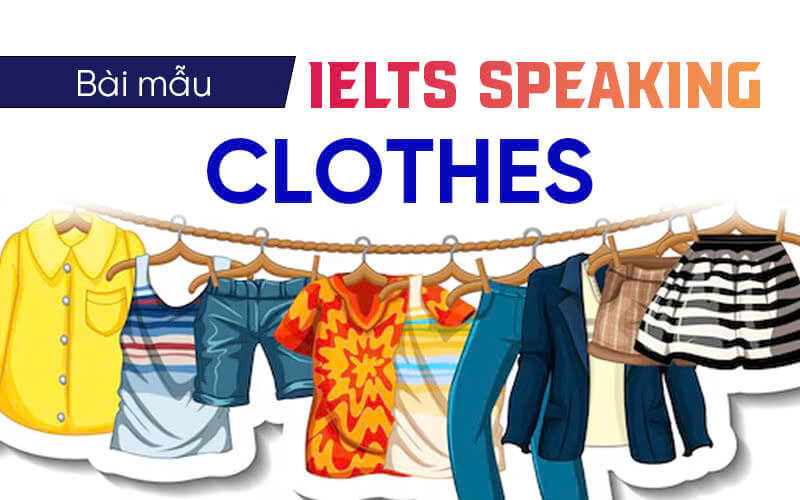
Bài mẫu IELTS Speaking Clothes – Part 2
Describe a piece of clothing that you particularly like.
You should say:
- What it is
- When you wear it
- Why you like it
- And explain how it makes you feel.
- —
I would like to talk about a tailored wool blazer that I own, which has become a staple in my wardrobe. This blazer is a classic navy blue and is crafted from high-quality wool, making it both stylish and comfortable.
I typically wear this blazer during formal occasions or business meetings, as it adds an air of professionalism to my attire. It also serves as a versatile piece that I can dress up or down, allowing me to wear it with jeans for a more casual look or with tailored trousers for a polished appearance.
I appreciate this blazer not only for its aesthetic appeal but also for its functionality. The fit is impeccable, accentuating my silhouette while allowing for ease of movement. Moreover, the fabric is of excellent quality, ensuring durability and comfort throughout the day.
Wearing this blazer instills a sense of confidence in me. It elevates my demeanor and makes me feel more prepared to tackle any professional challenge that comes my way. Ultimately, this blazer is not just a piece of clothing; it represents my commitment to professionalism and self-presentation.
Bài mẫu IELTS Speaking Clothes – Part 3
- Question 1: In your opinion, what role do clothes play in our daily lives?
Clothes serve several important functions in our lives. Primarily, they provide protection from environmental factors, such as weather and climate. Additionally, clothing serves as a medium for self-expression and individuality. People often choose garments that reflect their personal style, cultural background, or social status, which can influence how they are perceived by others.
- Question 2: How do you think fashion trends influence our clothing choices?
Fashion trends significantly impact our clothing selections. They promote certain styles and aesthetics that can lead individuals to conform to prevailing norms. While some may view this as a positive aspect of communal expression, others may argue that it encourages consumerism and a lack of originality. Ultimately, trends can create a sense of belonging but may also stifle personal creativity.
- Question 3: Do you believe that the type of clothing someone wears can affect their confidence?
Absolutely. The type of clothing one wears can greatly influence their self-esteem and confidence levels. Well-fitted, stylish attire can enhance an individual’s self-image, leading to improved interactions and performance in various social or professional settings. Conversely, ill-fitting or inappropriate clothing may hinder an individual’s confidence, as it can evoke feelings of insecurity.
- Question 4: In what ways do you think clothing reflects an individual’s culture?
Clothing is a profound reflection of one’s culture. Traditional garments often embody historical significance and social values unique to specific communities. For instance, attire worn during festivals or ceremonies not only showcases aesthetic elements but also conveys cultural narratives and heritage. Consequently, clothing acts as a cultural identifier, preserving and promoting the distinctiveness of various ethnicities.
- Question 5: How important is sustainability in the fashion industry today?
Sustainability has become increasingly crucial in the fashion industry. As awareness grows regarding the environmental impacts of fast fashion, many consumers are now prioritizing ethical production practices. Sustainable fashion promotes eco-friendly materials and fair labor conditions, appealing to a conscientious audience. This shift signals a transformative approach within the industry, emphasizing the importance of responsible consumption and environmental stewardship.
Xem thêm: IELTS Speaking Daily Routine
Kết bài
Trên đây là các từ vựng thường gặp và câu trả lời mẫu cho bài thi IELTS Speaking chủ đề Clothes! Mong là nó sẽ giúp được bạn!
Đặc biệt, Smartcom English đang có lớp IELTS Advanced chuyên sâu, giúp bạn từ điểm IELTS 5.5 nhanh chóng đạt được 7.0-8.0 trong vòng 6 tháng!
Bạn đã sẵn sàng bước vào hành trình luyện thi IELTS chuyên sâu chưa? Smartcom English – nơi chi phí học IELTS hợp lý và chất lượng giảng dạy được đặt lên hàng đầu. Ngừng tìm kiếm “nên học IELTS ở đâu” – vì bạn đã tìm thấy! Với chương trình học tích hợp các phương pháp học chủ động như Hybrid Learning, bạn sẽ có cơ hội để học tập, nâng cao cả 4 Kĩ năng cùng với thầy Nguyễn Anh Đức – giảng viên hàng đầu tốt nghiệp Đại học Harvard danh giá!
Cùng tham gia ngay để bứt phá điểm thi và “giải quyết” đề IELTS Speaking Clothes một cách nhẹ nhàng bạn nhé!
Kết nối với mình qua

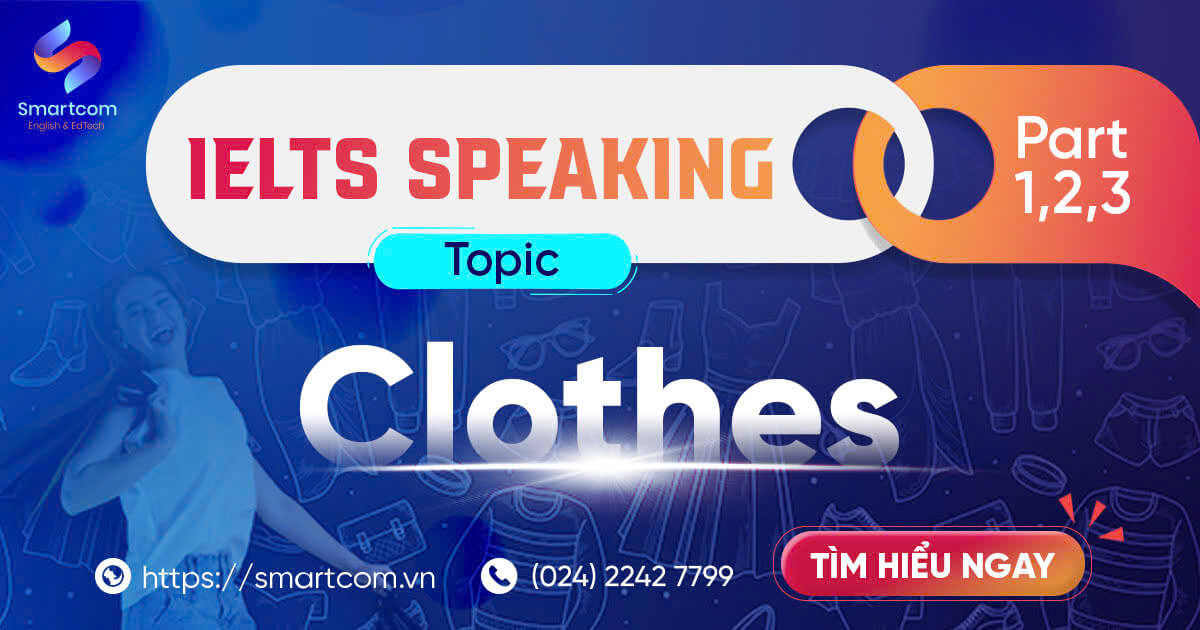
![[PDF + Audio] Tải Sách IELTS Cambridge 19 (Kèm đáp án)](https://smartcom.vn/blog/wp-content/uploads/2024/06/ielts-cambridge-19_optimized.png)


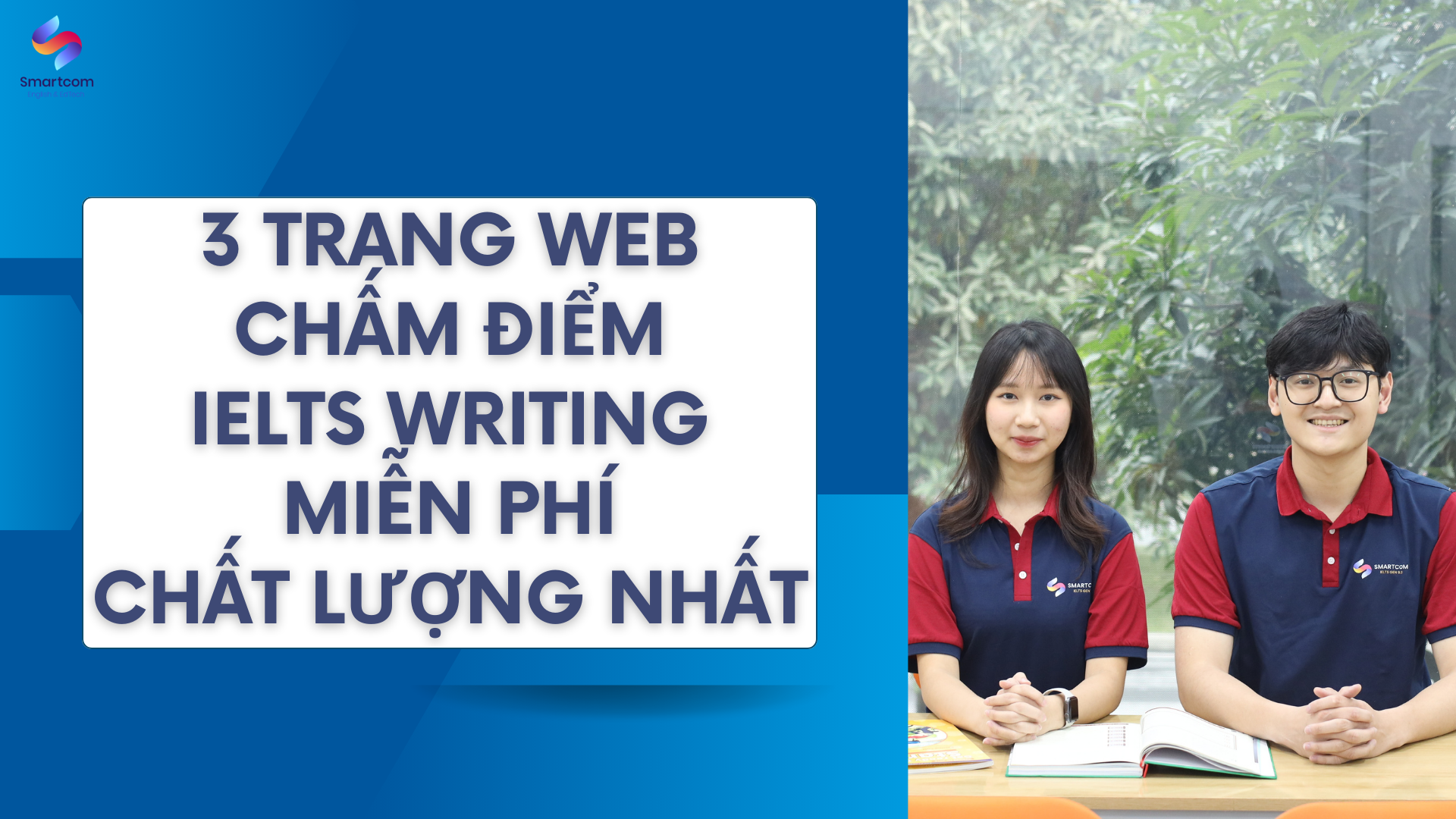
![[PDF + Audio] Tải Sách IELTS Cambridge 17 (Kèm đáp án)](https://smartcom.vn/blog/wp-content/uploads/2024/07/sach-ielts-cambridge-17_optimized.jpg)
![[PDF + Audio] Tải Sách IELTS Cambridge 15 (Kèm đáp án)](https://smartcom.vn/blog/wp-content/uploads/2024/07/ielts-cambridge-15_optimized.jpg)






